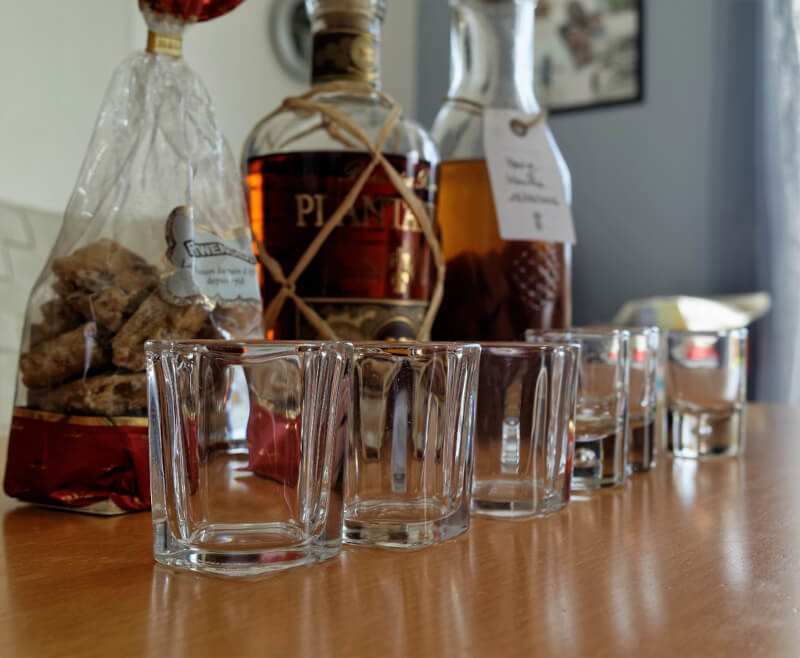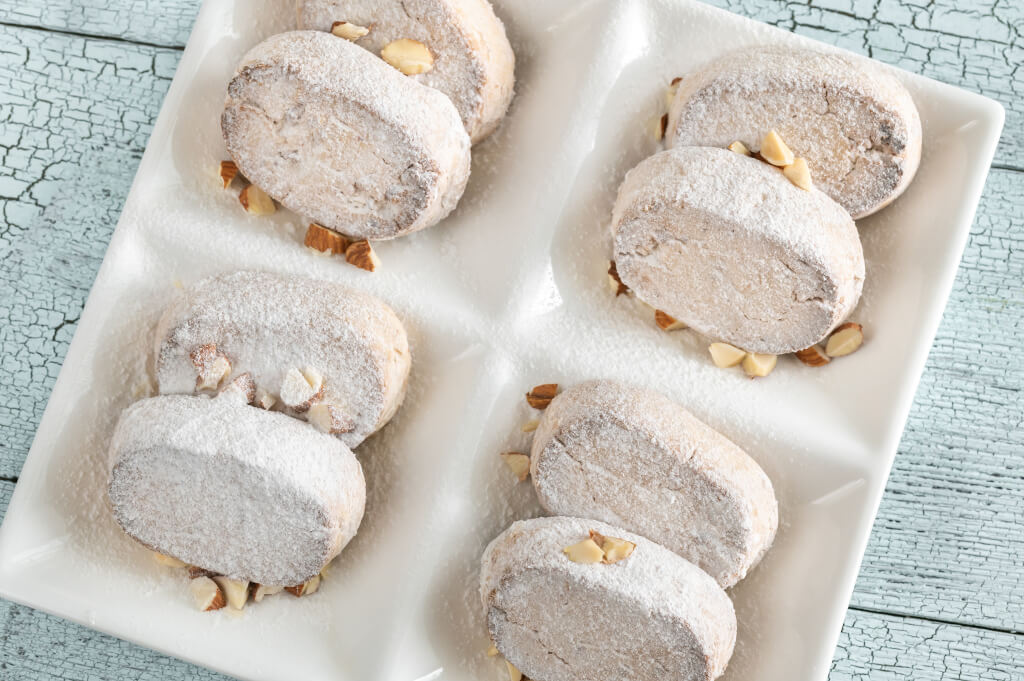Where Did Shortbread Come From?
The history of shortbread, the iconic Scottish biscuit, is quite interesting. Some versions of this delicious dessert can be traced back to the 12th century when dough scraps were sweetened and baked. Mary, Queen of Scots, in the 16th century, is credited for transforming biscuits from their original, coarse form into the refined, sweet, and crumbly version we love today.
Because of the large amount of butter used in its creation, shortbread has a “short” or soft feel, hence the name. As one further studies the shortbread’s chronicle, the first written recipe is found in 1736, from Mrs McLintock. Mrs. Beeton, a culinary authority, later detailed the ingredients and method for making “Original Scotch shortbread,” which included butter, sugar, flour, caraway seeds, and candied peel. Mary, Queen of Scots is thought to have enjoyed these seeds, which may explain why they were included in the ‘Original Scotch’ recipe.
Petticoats and the Royal Heirloom
A huge, spherical shortbread that breaks into frilled, triangular pieces, ‘petticoat tails’ were a favorite of our illustrious monarch. The French phrase “petites galettes,” literally “little cakes,” may have been the inspiration for the English phrase “petticoat tails.” On the other hand, legend has it that Queen Victoria preferred a pinch of salt on her shortbread.
Its History, Techniques, and Varieties
Even with the recognisable finger shapes, machine duplication is not quite the same, as noted by Rupert Laing of Edinburgh’s Shortbread House. The most common is a combination of flour, butter, and sugar, one of three main traditional recipe variants he highlights. In the second, cornflour is added to make the final product softer, while in the third, rice flour or semolina is used to make the final product slightly grittier and crispier. The trick? Butter of high quality; Laing suggests Irish butter because the cattle there spend so much time grazing.
Some Shortbread and Festive Occasions
Shortbread is a treat that is usually saved for holidays like Christmas, Burns Night, and New Year’s Eve. On New Year’s Day, ‘first-footers’ traditionally deliver gifts of shortbread and whisky. The ritual is believed to bring prosperity to the household. Traditional wedding favors often include shortbread. In Shetland, it was once customary for the groom to break a decorated shortbread over the bride’s head as the couple entered their new home.
Whisky and Shortbread
Whisky-infused shortbread, like Walkers’ Glenfiddich shortbread rounds, is available for purchase, however, it might be difficult to incorporate whisky into the baking mix. Whisky and shortbread together, however, is a treat that may be appreciated by fans of both whisky and biscuits.
According to Laing, “The best place to begin is with traditional shortbread, rather than one that has a lot of additional flavors.” That way, you can pair the perfect whisky with your biscuit. Glenrothes Select Reserve is my preferred accompaniment. Brand ambassador for Bacardi’s whisky range in northern Europe, Andrea Montague, suggests that the key to finding the ideal dram to pair with shortbread is to focus on complementing rather than conflicting flavors.

Montague advises a light, lemony, or honeyed dram, such as the Highland single malt Aberfeldy 12 Year Old or the Lowlands whisky Glenkinchie 12 Year Old, to complement the buttery softness of a biscuit. A rich dram with flavors of stewed or dried fruit and traces of citrus peel is ideal for making a crumblier, somewhat saltier shortbread. I recommend Royal Brackla 12 Year Old, a single malt whisky aged in oloroso Sherry casks from the Highlands.
Whiskies from Amrut, an Indian distillery recognized for its signature spicy flavor, are what Montague recommends to pair with the caraway seed shortbread. The combination of Scotch and shortbread is unparalleled. They complement one another perfectly and should be savored for their rich histories, unique tastes, and boundless pleasure.
The Harmony of Shortbread and Scotch
As we delve deeper into the rich tapestry of shortbread and Scotch, it is essential to appreciate the multitude of ways these two quintessential elements can harmoniously marry. To truly savor this experience, we present a handy pairing guide, a tool to navigate through the expansive landscape of shortbread variations and Scotch whiskies.
| Type of Shortbread | Whisky Pairing | Reason for Pairing |
| Original Shortbread | Glenrothes Select Reserve | The original, buttery shortbread pairs well with this Speyside whisky’s mellow and balanced flavors. |
| Soft, Buttery Shortbread | Highland Single Malt Aberfeldy 12-Year-Old | The light, honeyed notes of Aberfeldy complement the sweet biscuit, while its citrusy undertones elevate the shortbread’s rich taste. |
| Soft, Buttery Shortbread | Lowlands Whisky Glenkinchie 12-Year-Old | Akin to Aberfeldy, Glenkinchie, with its light and citrusy profile, also complements buttery shortbread. |
| Crumbly, Slightly Salty Shortbread | Highland Single Malt Royal Brackla 12-Year-Old | The rich fruit and Sherry-spiced notes bind the flavors of the slightly salty shortbread, creating a delightful harmony. |
| Caraway Seed Shortbread | Amrut Indian Whisky | The spicy character of Amrut whiskies offers an intriguing complement to the distinctive flavor of caraway seed shortbread. |
A Balanced Indulgence
It is essential to recognize the harmony that is achieved by the superb combination of these two flavors: the opulence of the shortbread complements the layered complexity of the Scotch whisky beautifully. Having said that, a word of caution is in order.
This powerful pair unquestionably offers an incomparable tasting experience, but it should be savored with a careful understanding of the richness it possesses to get the most out of it. Each crumble of shortbread and each drop of Scotch carries with it decades’ worth of tradition, skill, and attention to detail. An excessive amount of indulgence, regardless of how enticing it may be, has the potential to obscure this complex interaction and transform the experience from enjoyable to intimidating.
Keep in mind that moderation is the key to enjoying Scotch and shortbread to the fullest, just as it is with the majority of life’s pleasures. Spend some time savoring each bite of shortbread and each dram of whisky so that you can fully appreciate the breadth and depth of flavor that they each have to offer. Become completely engrossed in the nuances of these Scottish jewels by focusing on their textures, scents, and subtleties.

